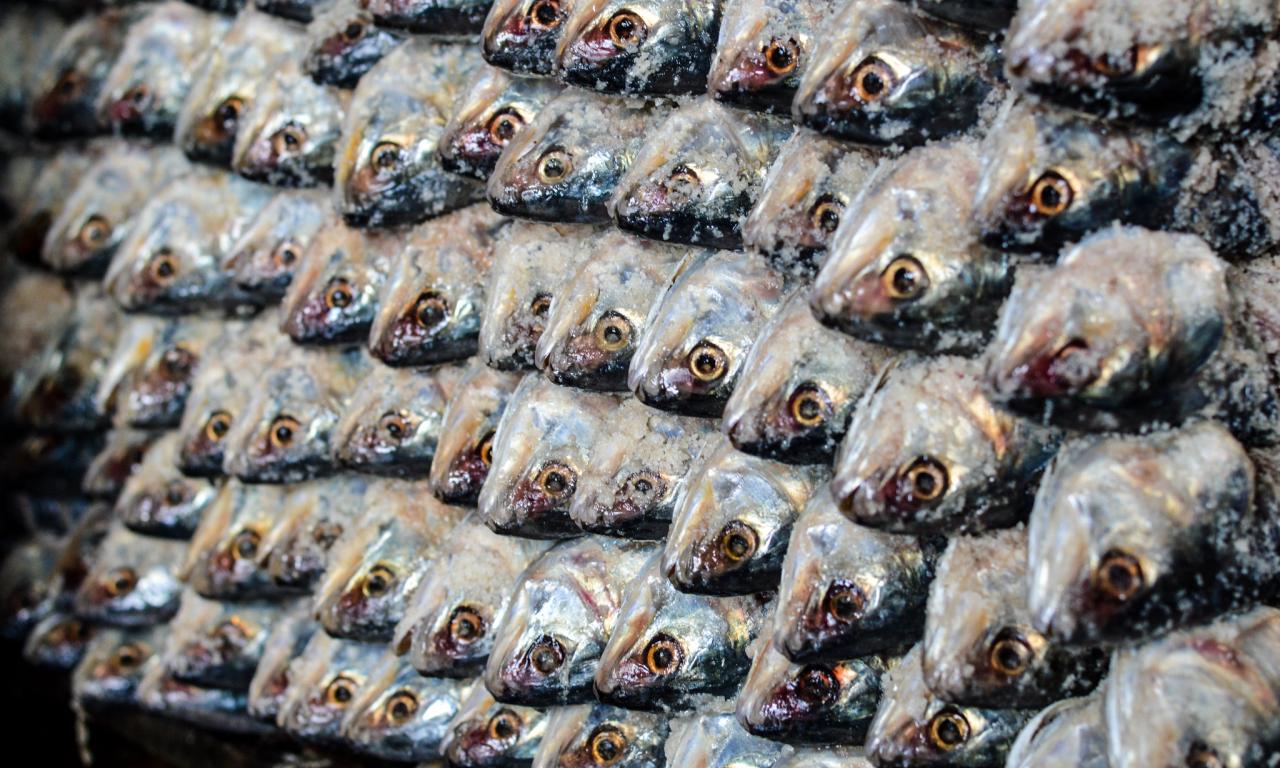
- The rise in disposable plastic usage is leading to microplastic accumulation in the marine food chain
- A new study found hazardous levels of microplastic concentration in dried fish species in Bangladesh, with unknown implications for human health
- The study is the first scientific record of the occurrence of microplastics in dried fish in South Asia
New research on microplastic accumulation suggests plastics may be more abundant in dried fish than fresh, posing serious implications for the aquatic food sector in Bangladesh. In the coastal nation, consumers largely prefer dried fish to fresh, making it a critical backbone of the country’s economy. But, as is the case with may aquatic food products, plastics now threaten the sector.
In much of the Global South, fresh fish is processed to create dried, salted, and fermented products, which generate jobs along fish supply chains and uplift local economies. These value-added products are both more profitable and longer-lasting, meaning they can be transported to rural food insecure communities that otherwise lack access to nutritious foods.
But a newly published study, with research contributions from WorldFish, found microplastic accumulation was more concentrated in dried fish as opposed to fresh fish in the Bay of Bengal. Since fresh fish retain their moisture, the body mass of dried fish is more concentrated and thus retains higher levels of microplastics.
The researchers found hazardous levels of microplastic concentration in two frequently consumed dried fish species, a problem which has unknown implications for human health.
“Fish consumption and plastic usage are both increasing in Bangladesh, and both represent major export industries. But one is now developing at the expense of the other, threatening low-income consumers who reap little of the benefits but instead must cope with accumulating plastic waste in their communities and in their food,” said Ben Belton, co-author and WorldFish’s global lead for social and economic inclusion.
The study, an output of the Dried Fish Matters project, is the first scientific record of the occurrence of microplastics in dried fish in South Asia, closing critical knowledge gaps on microplastic accumulation in aquatic food chains.
The rise in disposable plastic usage is creating a pressing challenge for food safety globally. Microplastics are accumulating in the marine food chain and then further proliferating in dried fish products, an essential lifeline to feeding the world’s rural poor.
A look at microplastics
Microplastics, which can be either manufactured small or created when macro-plastics disintegrate into smaller fragments due to wind and wave erosion, are ubiquitous but rarely seen. Smaller than five millimeters, these particles originate largely from textiles, tires, microbeads in personal care products and fishing gear. They end up in waterways primarily through laundry, sewage systems and riverine outputs.
Microplastics are now finding their way into the digestive tracks of small pelagic fish, which are then consumed by larger carnivorous fish, biomagnifying through the food chain until the fish are eventually landed for human consumption. However, little was previously understood on how microplastics biomagnify and accumulate in fish once they've been dried.
Biomagnification in preferential species
The paper examined microplastic concentrations in two commonly consumed marine species, Bombay duck (Harpadon nehereus) and ribbon fish (Trichiurus lepturus), in two locations in the Bay of Bengal. These species account for approximately half of all dried fish consumed in the country.
The number of microplastics per gram of body mass was found to be approximately 30 and 40 microplastic pieces for Bombay duck and 35 and 46 pieces for ribbon fish, respectively. Of chief concern, researchers found microplastic accumulation was more concentrated in dried fish as opposed to fresh.
Moreover, unlike other animal-sourced foods, aquatic organisms are often eaten whole without discarding the digestive tract, exposing consumers to higher concentrations of microplastics concentrated in the digestive track.
Considering dried fish is preferentially consumed, or otherwise many rural consumers’ only option, these hazardous levels of microplastic accumulation collectively threaten biodiversity, human health and regional food and nutrition security.
Sustaining and safeguarding consumers
There is little research on the impacts of microplastic digestion on human health, but they’re unknowingly being consumed in large quantities.
“The contribution of dried products to fish consumption is disproportionately important for low-income consumer groups, making these products essential for food and nutrition security, but the safety of these foods is in jeopardy,” said Jabed Hasan, lead co-author and a research assistant at Bangladesh Agricultural University’s Laboratory of Fish Ecophysiology.
In light of the high levels of microplastic contamination identified in the study, the paper’s authors recommended that the relevant ministries and government departments work together to identify long-term solutions to the potentially grave risks posed by the growing presence of microplastics in food products, which ideally would start with preventing them from entering waterways in the first place.
It’s thus necessary to target microplastics at the source—take ghost nets, or discarded fishing gear that gradually degrades, which account for ten percent of all plastic in the ocean. While this is proving a challenge to regulate, there are also easier solutions like banning microbeads in personal care products, explained Belton.
“Potential health risks make it important not only to assess microplastic accumulation in food organisms, but to stop in its tracks in order to prevent exposure to the most vulnerable consumers,” said Belton.
Watch the video abstract:
